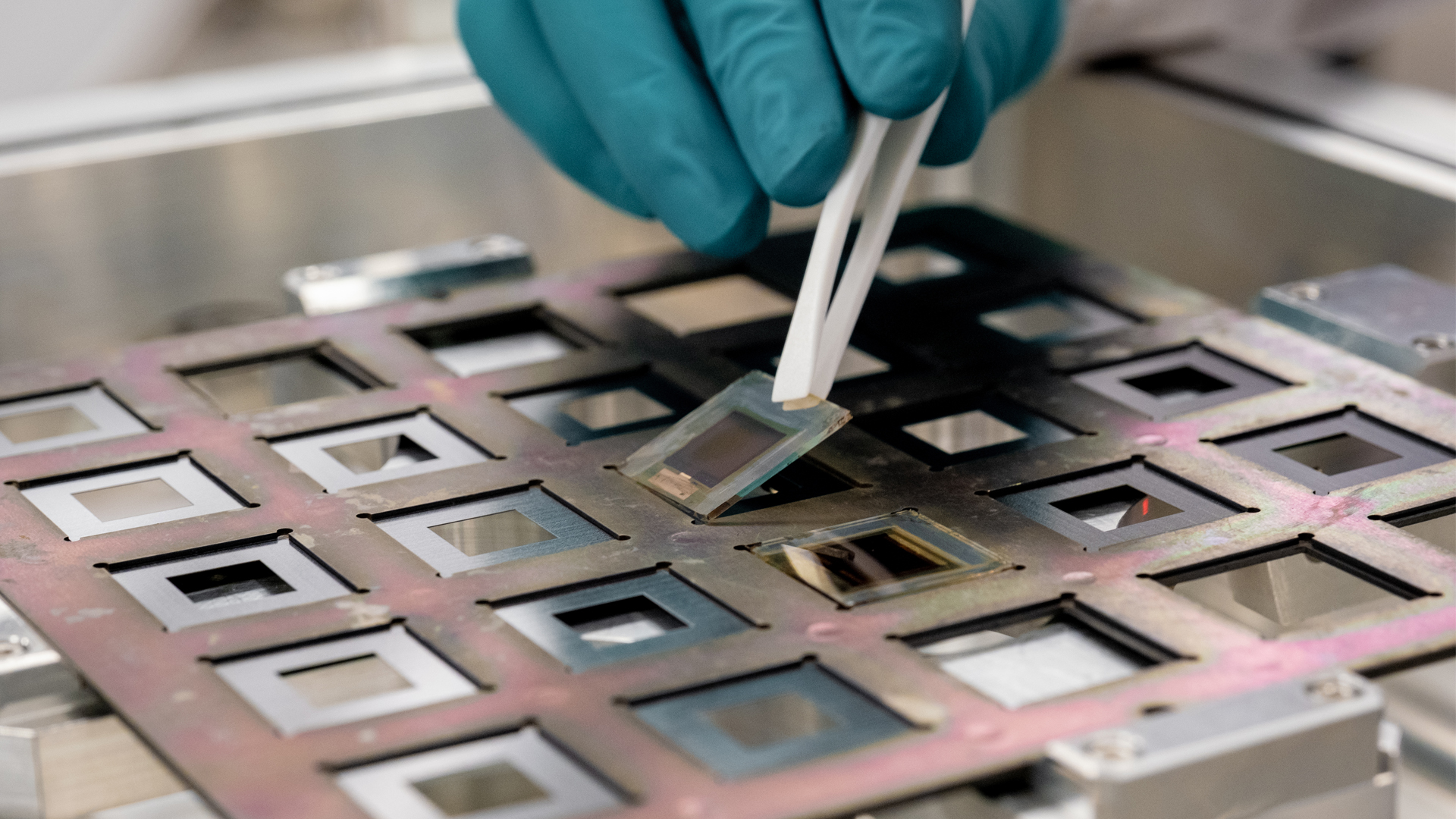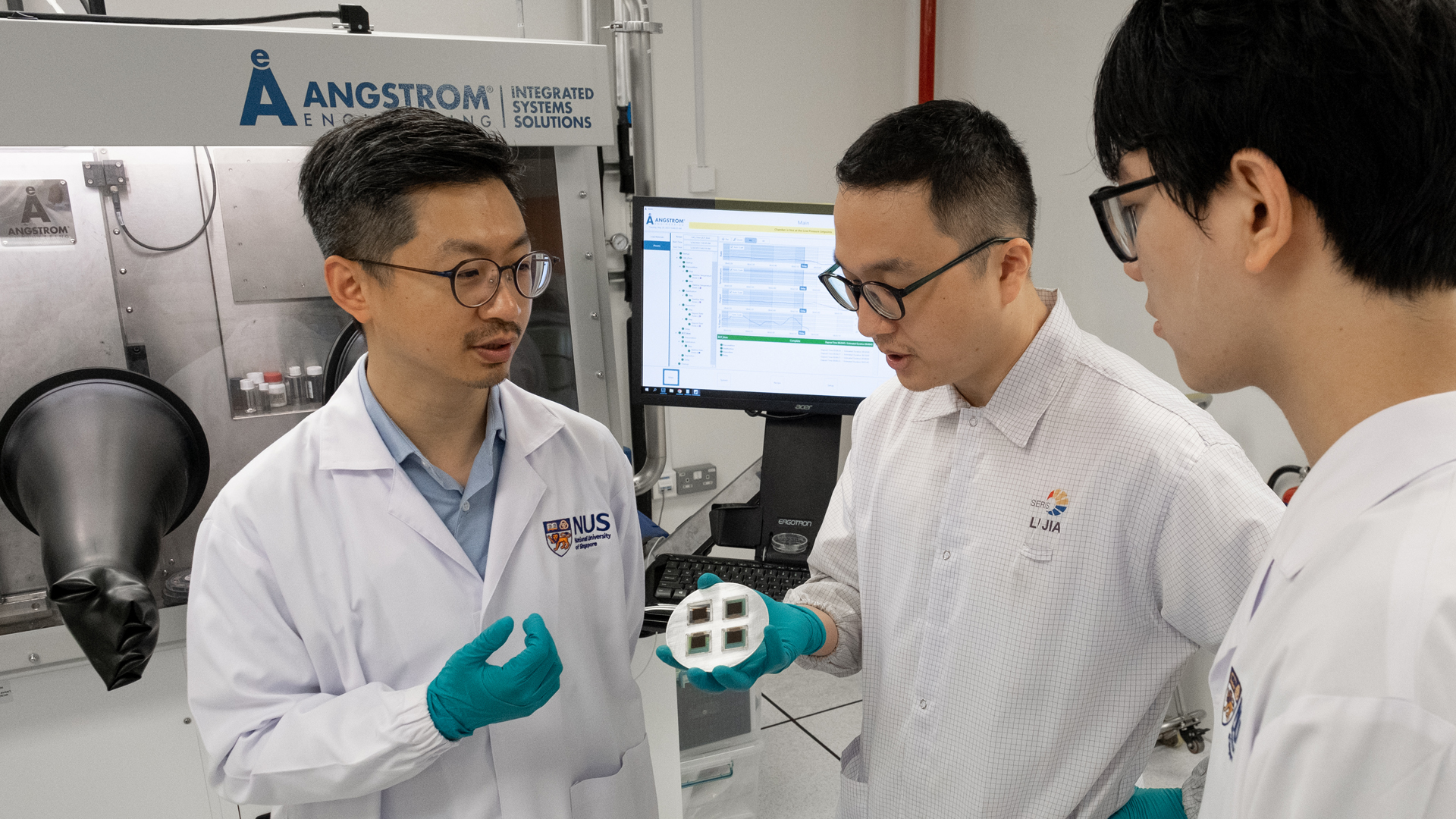
A new world record in solar cell efficiency has been set by researchers at CDE, marking a significant step forward in the technology to develop cheaper, more efficient and durable next-generation solar cells.
The team behind the breakthrough is led by Assistant Professor Hou Yi (Dept of Chemical and Biomolecular Engineering), working alongside scientists from the Solar Energy Research Institute of Singapore (SERIS), a university-level research institute in NUS.
Their perovskite solar cells have reached an impressive efficiency of 24.35 per cent in a one-centimetre square cell, surpassing the previous record of 23.7 per cent.
To ensure consistent comparisons among different solar cell technologies, the photovoltaic community uses a standardised size of at least one-centimetre square to measure the efficiency of cells.

Perovskite solar cells are made from a class of materials known for their high light absorption efficiency and ease of fabrication, making them ideal for solar energy applications. Over the past decade, researchers have made a series of significant advances in perovskite cells and the technology continues to evolve.
“Our objective was to bridge the efficiency gap and unlock the full potential of larger-sized devices,” said Asst Prof Hou.
“Building on more than 14 years of perovskite solar cell development, this work represents the first instance of an inverted-structure perovskite solar cell exceeding the normal structured perovskite solar cells with an active area of one-centimetre square, and this is mainly attributed to the innovative charge transporting material incorporated in our perovskite solar cells. Since inverted-structure perovskite solar cells always offer excellent stability and scalability, achieving a higher efficiency than for normal-structured perovskite cells represents a significant milestone in commercialising this cutting-edge technology.”
Performance and durability
The team’s record-breaking accomplishment was made by successfully incorporating a novel interface material into perovskite solar cells.
“The introduction of this novel interface material brings forth a range of advantageous attributes, including excellent optical, electrical, and chemical properties,” said team member Dr Li Jia, postdoctoral researcher at SERIS.
“These properties work synergistically to enhance both the efficiency and longevity of perovskite solar cells, paving the way for significant improvements in their performance and durability.”
The team says their results could mark a pivotal milestone in advancing the commercialisation of a low-cost, efficient, stable perovskite solar cell technology.

“Our findings set the stage for the accelerated commercialisation and integration of solar cells into various energy systems,” said team member Mr Wang Xi, an NUS doctoral student.
“We are excited by the prospects of our invention that represents a major contribution to a sustainable and renewable energy future.”
Going forward Asst Prof Hou and his team aim to push the boundaries of perovskite solar cell technology even further, including working to improve the stability of perovskite solar cells, as they are sensitive to moisture and can degrade over time.
“We are developing a customised accelerating ageing methodology to bring this technology from the lab to the fab. One of our next goals is to deliver perovskite solar cells with 25 years of operational stability,” Asst Prof Hou said.
The team is also working to scale up the cells to modules by expanding the dimensions of the perovskite solar cells and demonstrating their viability and effectiveness.
“The insights gained from our current study will serve as a roadmap for developing stable, and eventually, commercially-viable perovskite solar cell products that can serve as sustainable energy solutions to help reduce our reliance on fossil fuels,” Asst Prof Hou said.





